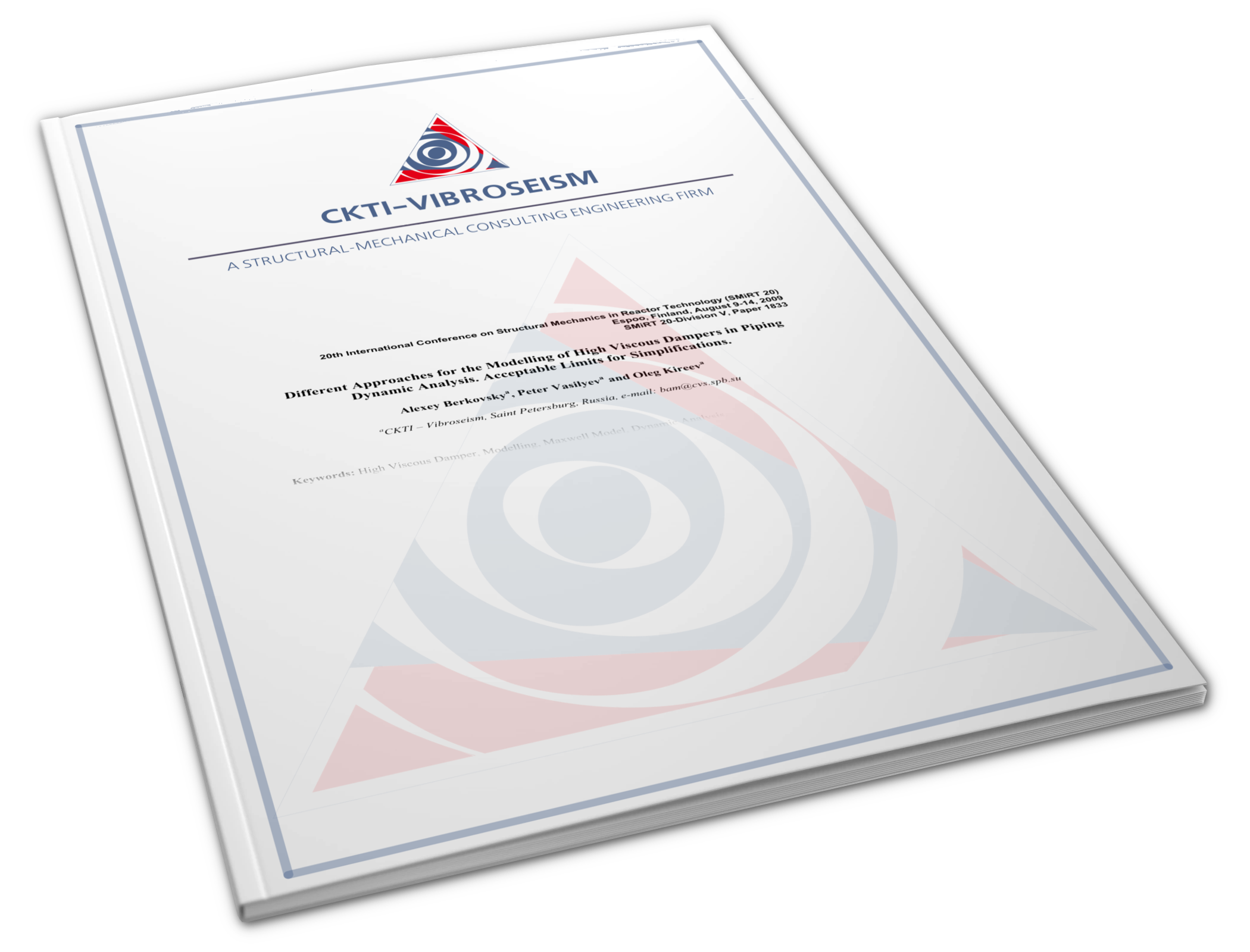Different Approaches for the Modelling of High Viscous Dampers in Piping Dynamic Analysis. Acceptable Limits for Simplifications
SMiRT-20, Espoo Finland, August 9-14 2009, Paper-1833

- Авторы: : Берковский А.М. [Alexey M. Berkovskiy], Васильев П.С. [Peter S. Vasilyev], Киреев О.Б. [Oleg B. Kireev]
- Редактор: English
- Страницы: 11
- №: 24
- Библиотека: Conference Papers
- Год: 2009
- Файл: 1833
Просмотры: 2761
During recent decades High Viscous Dampers (HVD) have been intensively implemented in Nuclear and Conventional Industry for protection of piping systems and equipment from the wide range of dynamic loads: earthquake, water/steam hammer, operational vibration, etc.
Application of these devices requires from the Designer/Analyst to implement a proper procedure covering all stages of design: selection of damper's location along pipeline, choosing damper's type, and finally modelling of damper in the frame of piping dynamic analysis.
Presented paper addresses namely the last issue: modelling of viscous dampers in piping seismic analysis. It is well-known that High Viscous Damper exhibits essential frequency-dependent characteristic of dynamic stiffness that hardly could be described by the conventional approach available in most commercial piping software programs: representing of damper's action by a spring element active for dynamic loads only. From the other hand more sophisticated 4-parametrical Maxwell model (Kostarev et al, 1993) that allows accurately reproduce damper's characteristics over frequency range of interest is not widely used in the specialized piping software. Besides, application of Maxwell model requires performing of Time History
Analysis while the conventional design procedure for seismic calculations is Response Spectrum Method that uses Floor Response Spectra as seismic input.
Paper presents several numerical examples of piping calculations with different models of dampers and discusses acceptability and limits for implementation of a simplified approach when damper is modelled by means of spring elements.
 ООО «ЦКТИ-Вибросейсм»
ООО «ЦКТИ-Вибросейсм» 
